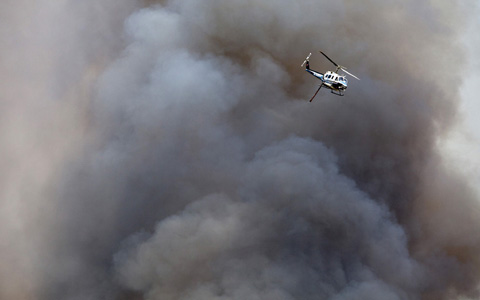China-Russia ties gaining strength
Updated: 2014-05-19 10:30
By Mikhail Titarenko (China Daily)
|
|||||||||||
Some people can’t help asking why Russian President Vladimir Putin should take part in the Conference on Interaction and Confidence Building Measures in Asia. The answer is that Asia is of special significance to Russia. Representing the combination of European and Asian systems, both geographically and politically, Russia objectively bonds the great expanse of land known as Eurasia.
The Asian part of Russia (West and East Siberia, plus the Far East) accounts for two-thirds of its land area. More than half of Russia’s Asian territory is not suited for human habitation because of its severe climate. In winter, temperatures often drop to minus 50-60 C, as a considerable portion of the territory is in the permafrost zone.
The total number of people living between the Urals and Chukotka/Kamchatka Peninsula is a little more than 30 million, or just over 20 percent of Russia’s total. For 500 years, Russia’s Asian region — primarily, its southern part — has been explored and populated by Russians, Ukrainians, Byelorussians and other nationalities from the European part of the country. It should be noted that the commercial use of the agricultural land — a highly risky endeavor — is an achievement of the working people of this region and highlights their contribution to Russia’s development. These and other important factors of the Russian economy and security are mutually beneficial to its Asian neighbors.
The Asian part of Russia is a huge depositary of precious resources such as oil, gas, coal, timber, diamond and freshwater. Extraction of these resources is a difficult and expensive proposition. But mastering of natural wealth is the basis of Russia’s economic well-being and prosperity.
Another important point is that the only warm-water port that provides Russia direct access to the world’s oceans after the collapse of the Soviet Union is in the Far East, while the Northern Sea route offers a unique transportation opportunity to connect Western Europe with East Asia and North America. During the Soviet era, Siberia and the Far East became the regions of efficient development and frantic economic activities. As a result, during World War II Siberia and the Urals became the workshops that forged the Soviet Union’s victory over Nazi Germany and fascist Japan.
After being elected president of Russia for the first time in the early 2000s, Putin started the comprehensive development of Siberia and the Far East to enable the regions to help realize Russia’s policy of revival and modernization.
The development of this vast expanse of land meets the development interests of Russia as well its neighbors. Russia considers the rise of Siberia and the Far East as an important factor for mutually beneficial cooperation with its Asian neighbors and partners, especially China.
Related Stories
Russia faces tough road to success 2014-05-19 08:13
China, Russia naval drill focuses on maritime threat 2014-05-19 07:14
China-Russia gas deal set to be signed 2014-05-16 07:14
Russia to take on active regional role 2014-05-15 07:12
Today's Top News
Concerns grow as real estate cool-down continues
China, Russia naval drill focuses on maritime threat
Deadly flooding hits Balkans
China halts exchanges with Vietnam
S Korea to disband coast guard
UN chief saddened by Turkey's mine tragedy
Hanoi blamed for anti-China riots
Hypnotherapist offers stress relief
Hot Topics
Lunar probe , China growth forecasts, Emission rules get tougher, China seen through 'colored lens', International board,
Editor's Picks

|

|

|

|

|

|





